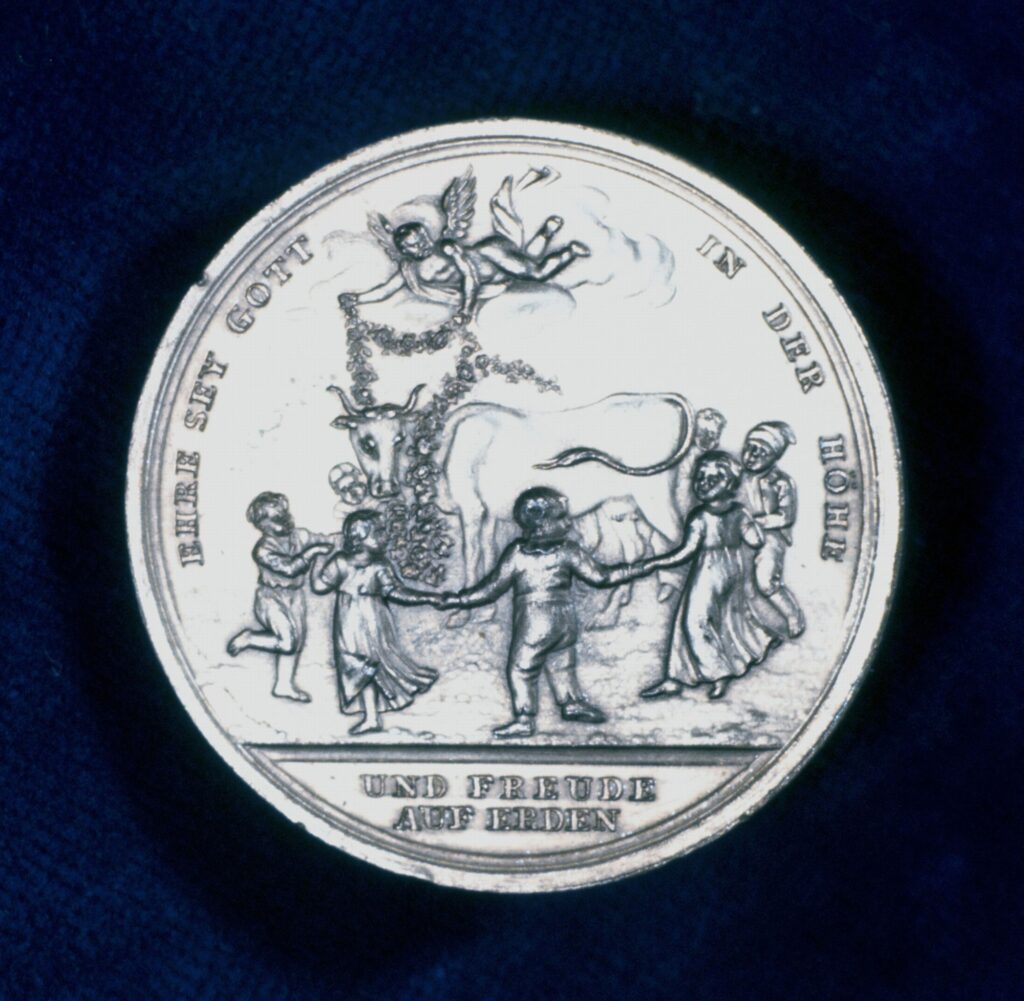A cow farm in Gloucestershire, England, was the setting of a turning point in medicine in 1796.
Two related viral diseases, smallpox and cowpox, were rife at the time. They mostly affected rural children and contributed to the high infant mortality rates that were commonplace in that period.
Smallpox was the deadlier of the two. It was noted, however, that milkmaids in particular seemed to be immune to the fatal disease.
This piqued physician Edward Jenner’s interest and prompted him to investigate the matter.
Eventually, he postulated that the milkmaids remained unaffected by smallpox precisely because they were constantly exposed to the similar but more benign condition, cowpox, necessitated by their work as they were always in close contact with cows. Thus Jenner came to the conclusion that if he could introduce the cowpox virus into eight-year-old boy James Phipps, then perhaps he too could gain immunity from the deadly smallpox disease. This is how the first vaccine was born and, by 1980, smallpox was eradicated globally.
The British physician’s breakthrough encouraged further research into vaccines. The 20th century saw a blooming period for the development of vaccines against various severe diseases. The World Health Organisation estimates that at least 10 million deaths were prevented thanks to vaccination between 2010 and 2015.

How do vaccines work?
When your immune system encounters a foreign object such as a virus, it starts mounting an attack against that particular virus. This process takes about a week to occur and once the virus is destroyed, the immune system leaves behind what are called ‘memory cells’, which can repeat the attack process much more quickly should you encounter the same virus again.
The problem with an organism such as the poliovirus is that one week may be too long to wait, and it would have already caused havoc by the time the immune system organises itself. This is where vaccines come in.
Vaccines work by imitating the micro-organism for your immune system, so that it knows how to respond when the pathogen attacks. In this way, it is similar to a dress rehearsal. If you imagine the virus is the play, and the immune system the actor, it would be a difficult feat to put on a good show if you have never before read the lines. However, if you are exposed to the script beforehand, the same way a vaccine exposes the immune system to a harmless version of the pathogen, then you can be sure that the show will be a massive success.

Immunisation today
Indeed, so rare are these conditions in this day and age, that it is difficult to imagine the impact that the fatal diseases had on three generations ago. Before the advent of vaccines, children were often crippled or killed by these diseases during infancy, while their parents watched helplessly on.
Fortunately, that reality is no longer commonplace nowadays. However, a new dangerous health threat has begun to surface itself: unfounded hysteria over vaccination and its supposed links with autism.
The links between autism and the MMR (measles, mumps, rubella) vaccine have been disproved time and again. The time when symptoms of autism start appearing happens to coincide with the age that the vaccine is given but it is not caused by it as proven by scientific studies.
The infamous doctor behind the 1997 paper that sparked this controversy, British researcher Andrew Wakefield, has had both his medical licence and his paper revoked, after it was found that he committed fraud to obtain his results. But it was too late by the time the mistake was realised; the damage was already done.
Media frenzy had quite disastrously perpetuated the misinformation, and like any rumour that never dies regardless of its absurdity, more parents fell in the trap and decided against vaccinating their children.
“The links between autism and the MMR vaccine have been disproved time and again”
This practice, of course, did not decrease the incidence of autism, rather, it saw the re-emergence of severe vaccine-preventable diseases, such as pertussis (more commonly known as whooping cough) and measles.
Measles had been close to eradication in many countries but has been on the increase since the anti-vaccination movement started to gain momentum. Ninety-eight countries reported more measles cases in 2018 compared with 2017.
This has led the WHO to label ‘vaccine hesitancy’ as one of the major global health threats of 2019.
The phenomenon has adherents in several Western nations, including Britain and France, but is arguably most high profile in the US, where measles cases leapt 559 per cent between 2017 and 2018.
A large-scale study that followed more than 650,000 Danish children for over a decade has led researchers to the same conclusion as previous efforts: that the MMR vaccine does not increase a child’s risk of autism.
“We found no support for the hypothesis of increased risk for autism after MMRvaccination in a nationwide unselected population of Danish children,” researchers wrote in the US journal Annals of Internal Medicine.
Seventy years ago, parents eagerly queued to vaccinate their children, as they saw first-hand the inflictions of these horrible diseases and how many innocent lives they claimed. Nowadays we take these tools for granted. Let not history repeat itself.
Vaccination is not a parent’s choice, it’s a child’s right.
Angela Andreinski was a medical student at the time of writing. Read more Child articles here.










